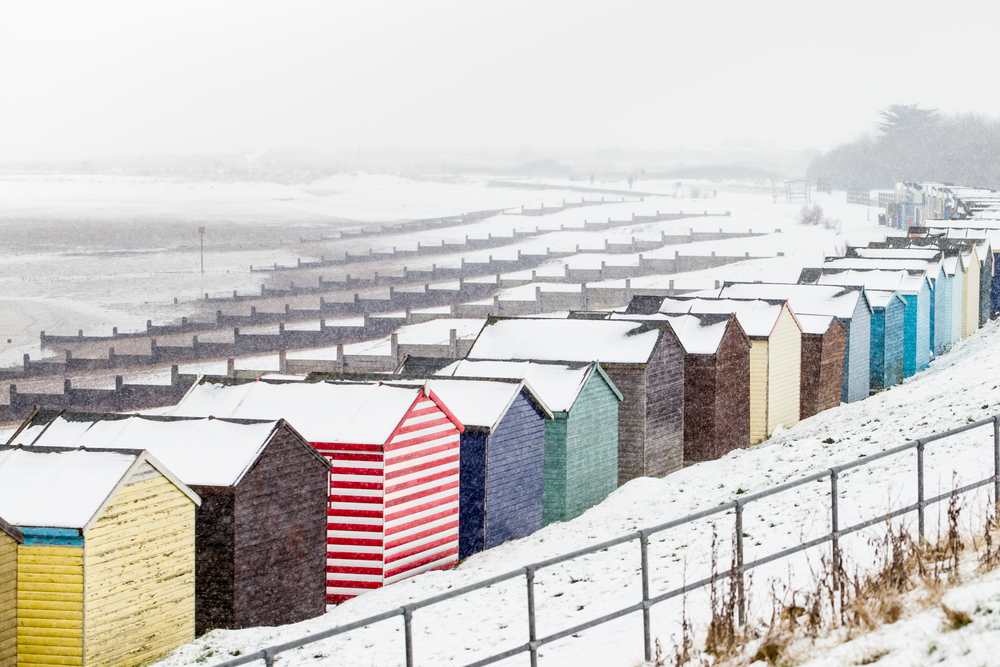With the right design, heating, and insulation, a shepherd’s hut can remain warm and toasty even through the coldest winter months.
In this post we will outline the best and most efficient ways to keep your shepherd’s hut warm in winter.
Insulating Your Sheperd’s Hut For Winter
If you invest in proper insulation for your shepherd’s hut, you can attain a steady and comfortable indoor temperature all year round. This means that, as well as keeping your hut warm in winter, good insulation can also keep your hut cool in the summer.
Insulation works through trapping warm air inside the hut. Without insulation, it will take much longer to heat your hut to a comfortable temperature, as a lot of the warm air will leak to the outside. Also, without adequate insulation, the hut will get cold again pretty quickly the moment you turn the heating off.
Ways to Insulate Your Shepherd’s Hut
You have a number of options for insulating your shepherd’s hut:
- Foam – Rigid foam boards may offer the highest thermal resistance of any insulation. But this may cost more than other options.
- Fibreglass – This may be the most affordable insulation choice, as well as the easiest to install.
- Sheep’s wool – The most eco-friendly insulation option. Sheep’s wool is breathable, meaning it will retain moisture as well as heat. This can help prevent dampness in your hut, which can greatly improve your hut’s thermal performance.
Eliminating Heat Loss – Floor, Walls, and Roof
When it comes to insulation, most people will target the hut’s walls. This makes sense, as the walls have the greatest surface area, and thus may contribute the most to heat loss. But remember that heat rises, which is why it is equally important to insulate the hut’s roof.
Multi-layer insulation can help prevent heat from escaping through the hut’s roof. For a greener option that can also add a touch of character, you could consider applying a layer of sustainable turf to your hut’s roof.
Heat can also escape through the hut’s floor. A layer of underfloor insulation can help prevent this. But insulated mats, or even thick rugs or carpets, can also help.
Draught-Proofing Your Shepherd’s Hut
Your hut’s windows and doors will also contribute to heat loss. Insulated doors and double-glazed windows can make a huge difference.
If your hut is a new build, it may already have double-glazed windows fitted. But if it is an older model, it may still have single-glazed windows. These can let in drafts while allowing heat to escape, which can make it much harder to heat your hut and to keep it warm. Replacing single-glazed panes with double-glazed will make a noticeable difference.
How to Heat Your Shepherd’s Hut in Winter
You have a range of options for heating your shepherd’s hut:
- Stoves – Many will choose the rustic charm of a traditional wood-burning stove. But for a more versatile option, choose a multi-fuel stove. This will give you the ability to burn a number of different fuels, which can help you manage your hut’s running costs.
- Electric heaters – An electric heater can quickly warm your hut at the touch of a button. These are only really an option if the hut is connected to the grid, though. Plus, they can use up a lot of power, which means you might be looking at relatively high running costs compared to a stove.
- Underfloor heating – This might be more difficult and expensive to install than other heating options. But an underfloor heating system is unobtrusive, which could help you make the most of the limited space inside your hut.
The combination of a heating system and good insulation will help keep your hut warm even on the coldest days of the year.
Whichever heating system you choose, make sure it is properly installed, with adequate ventilation where necessary. It is also important to keep on top of maintenance.
It’s also important to be aware that a number of insurance exclusions and conditions apply to the use of open fires and barbeques, and leaving a shepherd’s hut empty over the winter months.*
The Cosy Touch For A Cosy Shepherd’s Hut Experience
Finally, there are a few finishing touches that will make your hut feel extra cosy in the winter.
A heated towel rack can provide its own source of heat, while also giving you somewhere to warm your socks and other items of clothing, so that they feel extra toasty when you put them on.
If you rent your shepherd’s hut to guests, you could provide blankets, sachets of hot chocolate, and even jumpers and slippers.
Get The Insurance You Need For Your Shepherd’s Hut
James Hallam is an independent Lloyd’s broker with a dedicated team of experienced insurance professionals who specialise in getting you the cover you need at a competitive price.
We will ensure you get full cover for your shepherd’s hut, whether you use it yourself, or you let it out to holidaymakers.
Learn more about our specialist shepherd’s hut insurance and get a free quote today.
*Insurance Exclusions and Conditions
Open Fires and Barbeques
We will not pay any loss or damage as a result of you using a barbeque, wood or log burner, or any other form of open fire within 3 feet of the shepherd’s hut. You must ensure that all sources of ignition are removed from the shepherd’s hut whilst unattended.
Draining Down – Water
From 1 November to 31March (both dates inclusive), when the shepherds hut has been unattended for more than 7 consecutive days, we will not pay for loss or damage unless the water has been turned off at the stopcock within the shepherd’s hut and the water system drained down.
Shepherds’ Huts Fire Protection
- We will not pay for any loss or damage to your building unless:
- Wood / log burners are installed by a HETAS approved person.
- Chimneys and flues are kept clean and well maintained as per the manufacturer’s instructions.
- Chimneys are to be swept at least twice per year by an approved person.
- A fireguard is always used to protect against flying sparks and hot embers.
- Logs are stored at least 6 feet away from the wood burner.
- Wood burner is extinguished and left to cool for a period of 30 minutes prior to the building becoming unattended.
- All clothing, fabric and other flammable items are always kept at least 3 feet away.
- All shepherds huts have a fire extinguisher and fire blanket installed.








 Savannah Armitage, Team Leader (Ipswich): Chartered Insurance Institute and BDMA qualified, Savannah is the principal handler for Private Client claims. With extensive experience across liability, property and motor, she has managed major losses involving high-value property, artwork, jewellery and international assets.
Savannah Armitage, Team Leader (Ipswich): Chartered Insurance Institute and BDMA qualified, Savannah is the principal handler for Private Client claims. With extensive experience across liability, property and motor, she has managed major losses involving high-value property, artwork, jewellery and international assets. Jenna Warman (London): Based close to our London Private Client team, Jenna brings extensive property loss expertise and London Market experience, with a strong advocacy background in negotiating with insurers and loss adjusters.
Jenna Warman (London): Based close to our London Private Client team, Jenna brings extensive property loss expertise and London Market experience, with a strong advocacy background in negotiating with insurers and loss adjusters. Amelia Collings (Ipswich): The first of our in-house Claims Academy, she is progressing along the CILA route. Despite her early career stage, she has already delivered fantastic results for clients, including securing significantly enhanced settlements.
Amelia Collings (Ipswich): The first of our in-house Claims Academy, she is progressing along the CILA route. Despite her early career stage, she has already delivered fantastic results for clients, including securing significantly enhanced settlements.
 Proactive steps to reduce your risk
Proactive steps to reduce your risk

